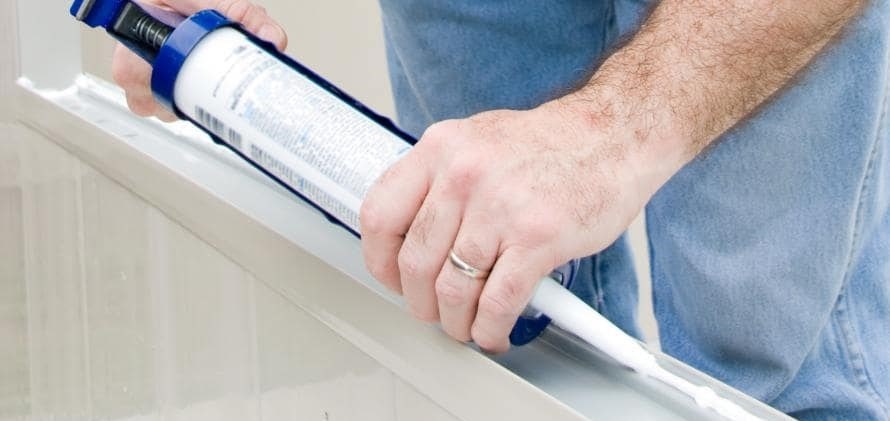💧 What is the Roof Waterproofing Sealant Method and Why is it Essential for Singapore’s Tropical Climate?
Singapore, a dense, modern city-state in the heart of the tropics, is synonymous with innovation and efficiency. Yet, one relentless challenge every structure faces is the battle against the elements: high humidity, intense solar exposure, and, most critically, frequent, torrential downpours. In this challenging environment, roof waterproofing sealant method is not just a building feature; it is an absolute necessity for structural integrity and long-term asset protection.
A waterproofing sealant method encompasses the techniques and materials used to apply a flexible, seamless, and impermeable barrier to a roof or building structure. This process seals joints, cracks, and entire surfaces, acting as the primary defense line against roof leakage repair Singapore. While paint or regular coatings offer protection from UV and superficial wear, waterproofing sealants are engineered chemistries designed to withstand hydrostatic pressure, thermal expansion, and constant moisture intrusion over decades.
🌧️ The Crucial Role of Waterproofing in the Singaporean Context
The island nation’s proximity to the equator results in a persistent monsoon climate. Unlike regions with distinct dry seasons, Singaporean buildings are subjected to water saturation year-round, meaning any weak point in the structure is quickly exploited. This makes the selection and application of the correct sealant critical for all property types, from older HDB waterproofing works to modern condominium roof repair projects.
The key to a successful waterproofing system lies in choosing a sealant that is chemically compatible with the substrate (concrete, metal, tile, etc.) and capable of handling the severe thermal movement—the constant expansion and contraction caused by the daily swing between scorching sun and heavy rain. A high-quality sealant method ensures the roof remains monolithic, preventing water from reaching the concrete and causing spalling concrete, a prevalent and costly issue in humid climates.
🧪 4 Essential Roof Waterproofing Sealant Methods for Singapore
The versatility of modern waterproofing technology offers various sealant methods, each tailored to specific structural requirements, building material, and stress conditions. Here, we delve into the four primary sealant chemistries utilized by waterproofing specialist Singapore firms:
1. Epoxy Sealant Method
Epoxy sealant methods rely on thermosetting polymers that form a rigid, highly durable, and chemically resistant bond. While often used as a coating, epoxy sealants are invaluable for their robust sealing capabilities in specific high-stress areas.
- Application Focus in Singapore: Epoxy sealants, often compounded with acrylic for better flexibility, are the ideal waterproofing sealing method for basement and any reservoir or storage tank like water tank waterproofing. Their rigid structure provides excellent resistance to chemicals and aggressive cleaning agents commonly found in commercial water features or industrial environments. They are also crucial in planter box waterproofing where roots and constant moisture saturation pose severe challenges to standard sealants.
- Trending Keywords: Epoxy sealant application, basement waterproofing Singapore, planter box waterproofing.
2. Cementitious Sealant Method (The HDB Standard)
Cementitious sealants are a blend of cement-based powders and liquid polymer additives. They are favored for their ease of application, cost-effectiveness, and ability to be applied to damp surfaces—a common scenario during repair jobs in Singapore's climate.
- Application Focus in Singapore: These sealants are indispensable for wet areas such as HDB toilet waterproofing and internal balconies, often composed of tiling or tile-based substrates. They are formulated to combat both positive water pressure (water pushing down, e.g., on a roof slab) and sometimes negative water pressure (water pushing inward from the soil, e.g., basement walls). This dual-action capability makes them a standard component in internal water seepage repair.
- Trending Keywords: Cementitious waterproofing, HDB toilet waterproofing, water seepage repair Singapore.
3. Bitumen (Asphaltic) Sealant Method
Bitumen sealant solutions are derived from crude oil and are renowned for their excellent water resistance and flexibility. They are typically applied as a membrane (sheet) or as a liquid-applied coating.
- Application Focus in Singapore: Bituminous solutions possess excellent resistance to most salt solutions, water, alcohol, and dilute acids and alkalis. This makes them ideal for waterproofing, particularly for exterior applications like low-slope flat roofs and the protection of foundation walls. For landed property roof maintenance with certain structures, cold-applied modified bitumen emulsions are preferred as they eliminate the fire risk associated with traditional torch-applied membranes, a significant safety consideration in dense residential areas. They are highly resilient to UV and the high temperatures experienced in exposed rooftop environments.
- Trending Keywords: Bitumen waterproofing, flat roof waterproofing, roof repair Singapore.
4. Silyl Modified Polymer (SMP) Method (The High-Performance Choice)
Silyl Modified Polymers (SMPs) represent the cutting edge of sealant technology. They combine the best features of silicone (UV stability) and polyurethane (strength and paintability) without the drawbacks of either.
- Application Focus in Singapore: These advanced polymers are acid-free, environmentally friendly, and perfect for a wide range of waterproofing needs, particularly in high-performance situations or in contact with sensitive materials. Our SMPs are capable of bonding to the same variety of substrates as a standard silicone sealant (metal, glass, concrete), but possess a much higher bond and peel strength. They are primarily used in critical joint sealing, flashing details, skylight perimeters, and expansion joints on high-rise commercial and residential projects where absolute, long-term integrity is paramount. * Trending Keywords: SMP sealant, advanced waterproofing materials, critical joint sealing.
👷 Professional Application: The Singapore Edge
Choosing the correct sealant is only half the battle; proper application defines the success of the entire system. In Singapore, professional application by a BCA registered contractor is critical for several reasons:
Compliance and Safety
The Building and Construction Authority (BCA) enforces strict standards regarding material quality, fire safety, and worker health. Contractors must adhere to these regulations, especially when working on high-rise buildings and in confined spaces. A professional waterproofing company is equipped with the knowledge and certifications to navigate these requirements, ensuring that the work is compliant and insurable.
Diagnosis and Preparation
Waterproofing failures often originate far from where the leak manifests. A specialist firm employs sophisticated diagnostic tools (like thermal imaging or moisture meters) to accurately pinpoint the source of water ingress. The most critical step—surface preparation—involves cleaning, grinding, and priming the substrate. Without professional preparation, even the highest-grade sealant will fail prematurely.
Climate-Specific Techniques
Applying liquid membrane sealants in high humidity and unpredictable rain requires speed and precision. Local waterproofing specialist Singapore teams are experts in managing the curing process under tropical conditions, often requiring specific primer types or accelerated cure formulations to prevent rain washout or bubble formation. This expertise ensures the sealant achieves its full technical properties, providing genuine, long-term protection.
📈 Long-Term Investment in a Tropical Environment
Investing in a robust Roof Waterproofing Sealant Method is a long-term economic decision. The cost of frequent, ad-hoc roof leakage repair Singapore far outweighs the initial expense of a professionally applied, high-quality sealant system. By using materials like Bitumen for durable low-slope coverage, Cementitious solutions for wet areas, Epoxy for tanks and basements, and Silyl Modified Polymers for critical expansion joints, property owners ensure they are fully prepared for the demanding tropical climate roofing solutions.
Ultimately, protecting your property in Singapore’s environment means entrusting the job to a professional waterproofing services provider who understands the nuances of each sealant type and has the local experience to apply them flawlessly under challenging conditions. A waterproof roof is a dry, safe, and structurally sound home.

